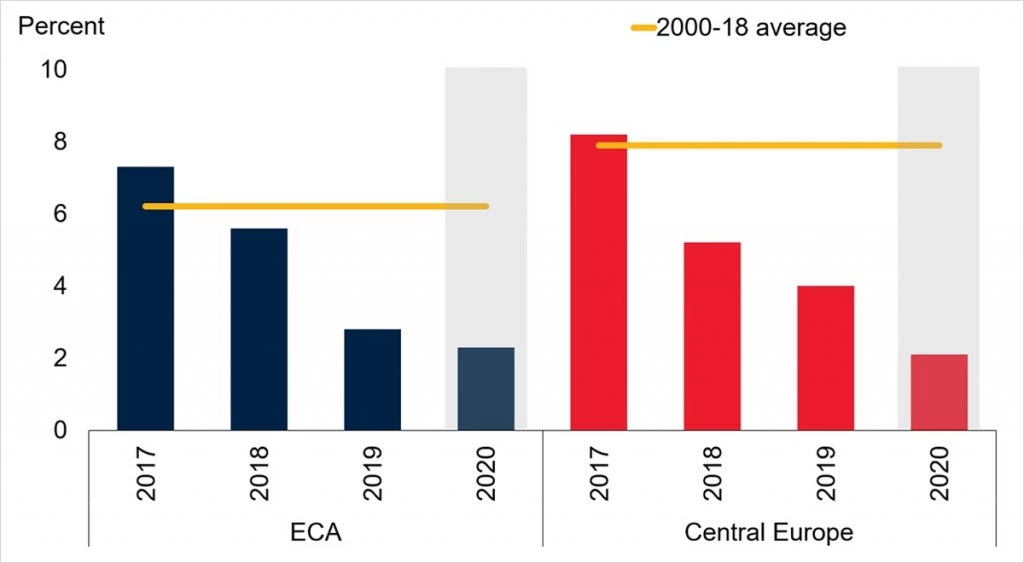 The current budget (FY10) expects a significant increase in revenue collection, a perennial problem in the country. The target revenue was set at 610.00 billion taka ($8.8 billion) with 261.10 billion collected in the first half and the remaining 348.90 billion in the second. The realization of this target requires a year on-y growth of 16.15%, which, being a notable departure from the trend growth rates was received with sheer skepticism from the economic observers of the country. However, about 33.67% more revenue has to be collected in the second half of the fiscal year as compared to the first half which seems realistic in the light of the fiscal performances of the last 5 fiscal years.
The current budget (FY10) expects a significant increase in revenue collection, a perennial problem in the country. The target revenue was set at 610.00 billion taka ($8.8 billion) with 261.10 billion collected in the first half and the remaining 348.90 billion in the second. The realization of this target requires a year on-y growth of 16.15%, which, being a notable departure from the trend growth rates was received with sheer skepticism from the economic observers of the country. However, about 33.67% more revenue has to be collected in the second half of the fiscal year as compared to the first half which seems realistic in the light of the fiscal performances of the last 5 fiscal years.
Total revenue collected during the first half of the fiscal year was impressive and exceeded the target by 3.28 billion implying annual growth rate of 17.95%. It means the year-on-year (y-o-y) growth during the second half of the fiscal year has to be 14.80%. The implied growth rate during the second half as compared to the first half is 30.73%, which is the lowest in the last five fiscal years (see table 1).
 The demonstrated strong fiscal performance of the first half of FY10 was due to impressive growth of direct and indirect revenues (from domestic sources). Income tax grew at a rate of 22.68 % (y-o-y) in the first half implying that it has to grow only by 17.33 % in the second half. Apparently, the government started receiving the dividend of its ongoing campaign to raise citizen’s fiscal awareness. During the first half of the fiscal year, more than 100,000 new people have paid their income tax. The Government is contemplating to strengthen this campaign to increase this number to 425,000 by the end of FY10.
The demonstrated strong fiscal performance of the first half of FY10 was due to impressive growth of direct and indirect revenues (from domestic sources). Income tax grew at a rate of 22.68 % (y-o-y) in the first half implying that it has to grow only by 17.33 % in the second half. Apparently, the government started receiving the dividend of its ongoing campaign to raise citizen’s fiscal awareness. During the first half of the fiscal year, more than 100,000 new people have paid their income tax. The Government is contemplating to strengthen this campaign to increase this number to 425,000 by the end of FY10.
The y-o-y growth of total indirect tax during the first half of FY10 was 26.31% implying a growth rate of 14.01 % only to meet the target in the remaining half of FY10. Within the indirect taxes, Value Added Tax (VAT) is the most decisive component which grew at a rate of 28.25% (y-o-y) in the first half. Several factors contributed to this growth. Imposition of supplementary duties as well as increase of the existing tax rate on Tobacco (which contribute about 30% of total VAT) is one of them. An increase of the Advanced Trade VAT (ATV) has also increased collection from construction related materials.

Apparently, the implied growth rates for the second half of the FY10 are not implausible. The continuation of the momentum of the first half will do the job. But the question is whether this momentum can be continued? The y-o-y growth of total revenue during first two months of the second half of FY is 14.71%. But this number is misleading. The m-o-m growth rates for these two months are negative, a sign of the reversal of the fiscal momentum of the first half of FY10. The growth during these two months compared to the first two months of the first half of FY10 is 22%, which is significantly smaller than the required growth rate of 30.73%.
Contrary to the optimism of the government, trade related revenue failed to show any sign of improvement yet. The actual growth of trade related revenue is consistently falling short of the required growth rate to meet the target. The Annual Development Program (ADP) has already been downsized following a lower-than-expected level of external project aid. The National Board of Revenue (NBR) is unlikely to meet the target of including 425,000 new taxpayers as only 37.64% of the total target was met during the three quarters of the current fiscal years.
Although no conclusion can be made based on the information of just two month, the looming fear of reversal of the fiscal momentum cannot be dismissed either at this juncture. The NBR needs to be more vigilant and proactive to achieve its overall revenue targets.


Join the Conversation